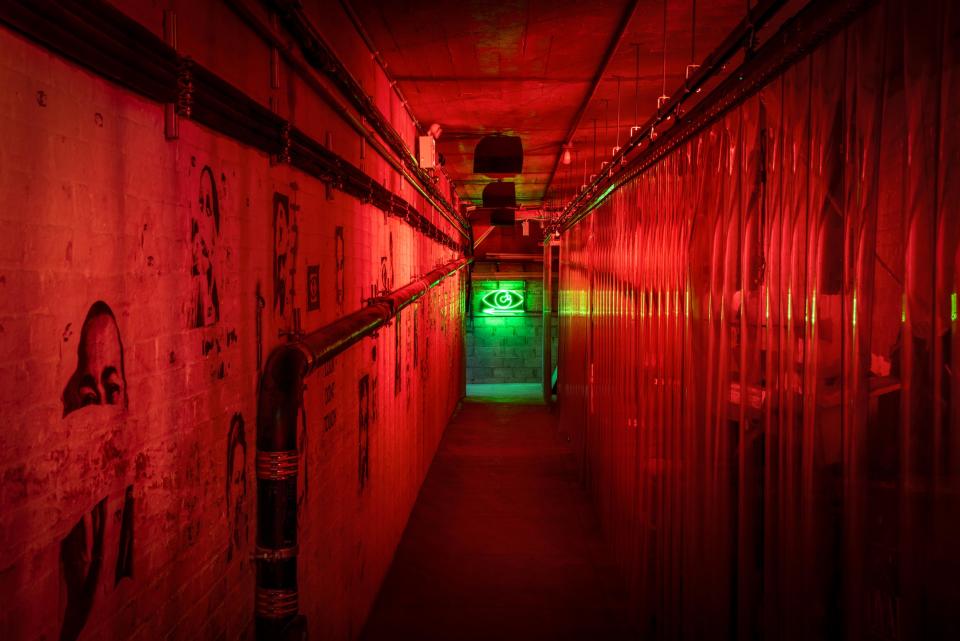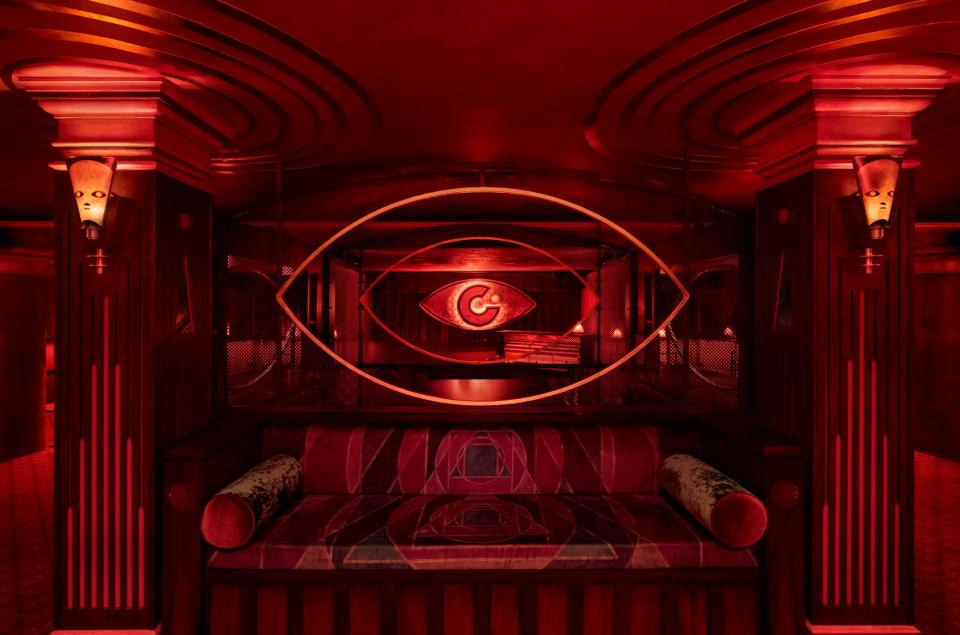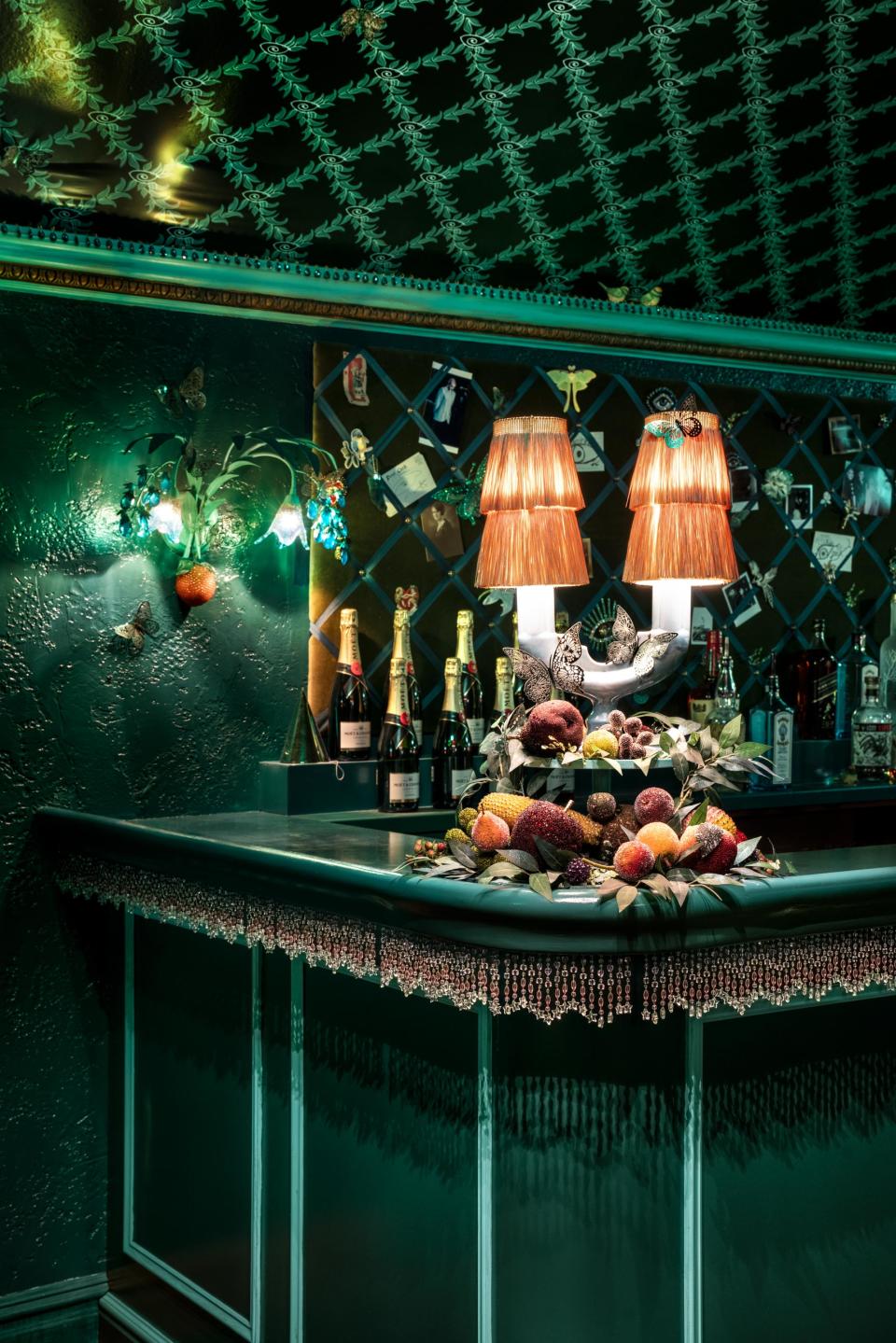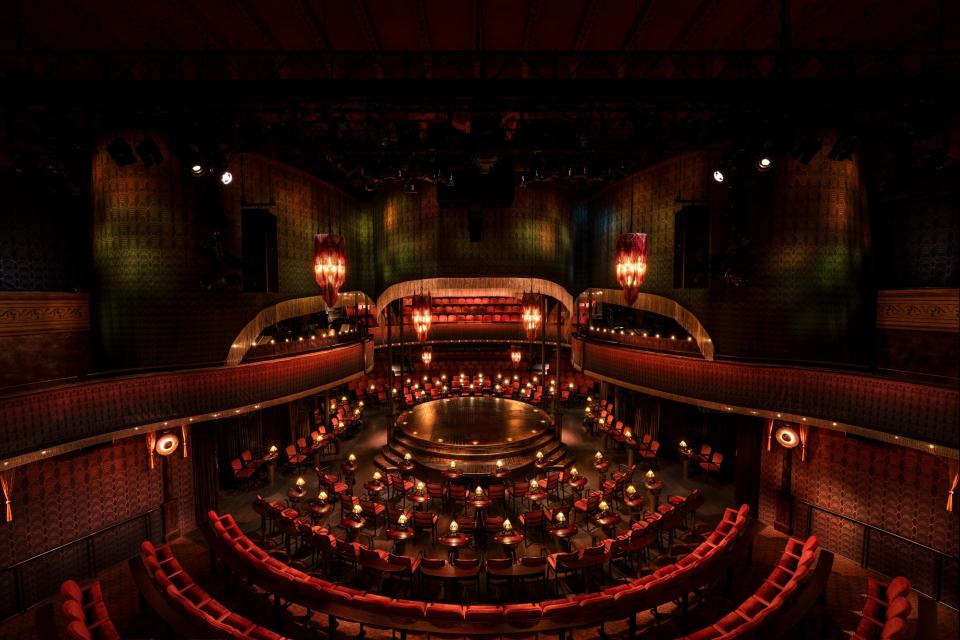Cabaret Transforms a Classic NYC Theater Into an Uninhibited German Underground

- Oops!Something went wrong.Please try again later.
- Oops!Something went wrong.Please try again later.
Photo: Emily Andrews, courtesy of Cabaret at the Kit Kat Club
Since its debut this April, patrons have filed into Broadway’s August Wilson Theatre, tickets in hand, to watch the latest revival of Cabaret—little do they know, they’re the ones being watched. Eyeballs, a recurring motif designed for this version of the musical’s 1930s Berlin hotspot setting, can be found everywhere in the remodeled space.
“Who’s watching who?” the show’s scenic, theater, and costume designer Tom Scutt asks. Sitting down to discuss the production with AD, he looks as cool and modern as the contemporary Cabaret he’s fashioned to bring the 1966 original into the present. One might never guess the British man standing outside the legendary theater, dressed casually in an oversize hoodie, is behind the building’s massive revamp. It looks nothing like the space Lea Michele called home as Fanny Brice a mere eight months earlier, when Funny Girl wrapped its successful Broadway run.

“I did an animation of the entire building. We didn’t do a model box for this because it was pointless: It’s a huge project,” Scutt tells AD. A big undertaking, indeed; the traditional proscenium-style stage has been replaced by a theater in the round. Additional seating, including a mezzanine level, was built where a backstage area once lived. Three uniquely stylized bars, accented by Jeremy Anderson’s futuristic light fixtures, are scattered throughout the seductive setting, welcoming audiences to unwind and imbibe before the performance begins. A separate cast of musicians and dancers provide entertainment during the production’s 75-minute prologue.
“If we’ve done our job correctly, by the time you’ve gone through the whole space—before you [sit down]—you don’t know which way is which,” says Scutt.

Creating that disorienting funhouse atmosphere for the audience is the point of the show. Oscar and Tony winner Eddie Redmayne stars as Cabaret’s Emcee, the Kit Kat Club’s master of ceremonies, who encourages its clientele to forget the outside world at a time when the Nazi Party is rising to power in Weimar Germany. The audience discovers Nazi-era Berlin through the eyes of American writer Clifford Bradshaw (Ato Blankson-Wood), who arrives in the city to work on his latest novel. Instead, he learns more about his sexuality, the cabaret’s androgynous inhabitants, and, of course, its star performer, Sally Bowles (Tony nominee Gayle Rankin).
Scutt says that queerness was at the forefront of his vision for the theater, which includes a handful of paintings created specifically for the space by artist Jonathan Lyndon Chase. “It obviously comes from a very personal, biographical place,” Scutt explains. “But I also think that this whole project was born out of the pandemic in London. There was a lot of pent-up, queer, creative energy happening during that time by artists who couldn’t create. I don’t think you can do [a version of] Cabaret in 2024 [that is] not be representative of the community that it’s talking about.”

Scutt’s Cabaret, which originated in 2021 in London (where it still plays), is unlike any of its predecessors—and there have been many, from the ’66 Broadway premiere of the Kander and Ebb classic starring Joel Grey, to the 1972 film adaptation starring Grey and Liza Minnelli, to the two Sam Mendes–directed Main Stem revivals led by Alan Cumming. However, the DNA of the musical itself “has to stay the same,” says Scutt, who explains that the August Wilson Theatre’s original design also inspired the makeup of this revival.
“I never for a second thought—nor did [director] Rebecca [Frecknall]—about shocking, or sensationalizing, or creating something that was aggressively different,” he says, noting that some of his favorite moments in the show are the simplest ones, like when Emmy and Tony winner Bebe Neuwirth (as Fräulein Schneider) belts out a show-stopping number in the second act as the floor beneath her slowly ascends into the air.

“[Despite] all the bells and whistles, what this show ultimately boils down to is this bare circle with someone standing on it, singing,” he says. “I kind of love that that’s on Broadway, that it’s not constant visual noise. It just floors you every time.” Even in its most stripped back moments, the production encourages viewers to leave the chaos and ugliness of the real world at the door. After all, as they say in Cabaret, “In here, life is beautiful.”
Originally Appeared on Architectural Digest
More Great Celebrity Style Stories From AD
Inside Benny Blanco’s Eclectic LA Home, Which Doubles as Hollywood’s Favorite Hangout
Windsor Castle: Inside the 1,000-Year-Old History of the Royal Residence
20 Years After Mean Girls, Regina George’s Bedroom Still Reigns Supreme
Inside Bad Bunny’s Houses: Tour Where the Latin Superstar Lives
Not a subscriber? Join AD for print and digital access now.
Browse the AD PRO Directory to find an AD-approved design expert for your next project.

